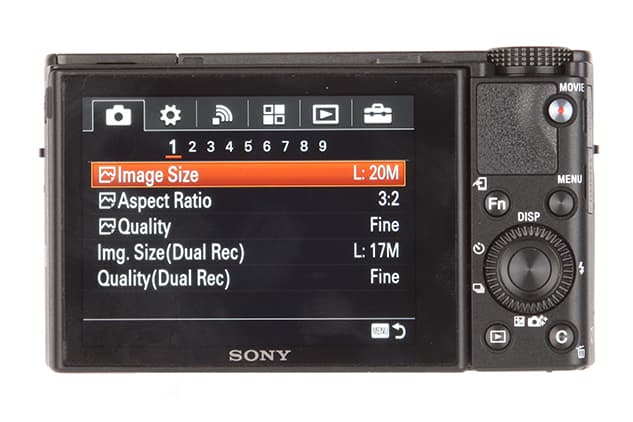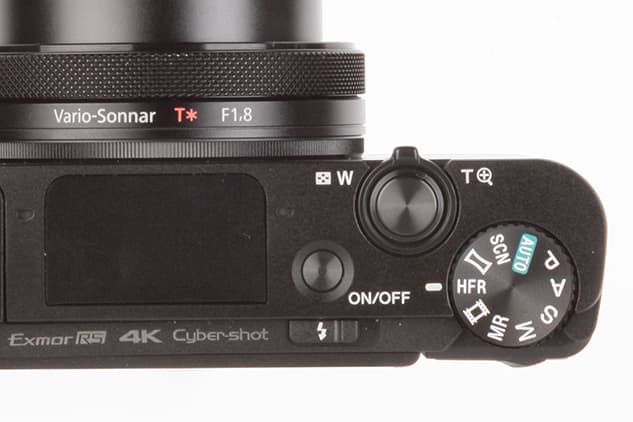Sony Cyber-shot DSC-RX100 IV Review – Build and Handling
Sony has taken the ‘if it ain’t broke don’t fix it’ approach to the design and the only way of identifying that it’s a new camera is by the model name and 4K branding on the top plate. The dimensions are identical to the RX100 III and it weighs just 8 grams more.
The magnesium alloy body and robust feel suggests it’ll survive the test of time, the only downside of the premium metal finish being is that it doesn’t offer much in the way of grip and there’s only a tiny rubberised thumb rest at the rear to prevent it slipping from your grasp. Attaching a wrist strap or neck strap is therefore imperative to avoid damage and a costly repair bill.

The design is virtually identical to the RX100 III, with a mode dial positioned at the top right and a similar layout of buttons beneath
Flicking the finder switch automatically fires the camera into life, but users must remember to pull the EVF towards them to engage it correctly and obtain access to the dioptre. Holding the EVF up to the eye presents a clearer and sharper view than the RX100 III, and in high-contrast conditions where reflections on the screen can hinder composition and make it difficult to review images it’s a useful feature to have.
The EVF doubles up as a great way of supporting the camera too and by bracing it up against my eye I found I was able to resolve sharper long exposure images than by holding the camera at arms length. With the EVF pushed down and hidden away it’s easy to forget it’s there. I got into a routine of using the EVF to switch the camera on and off, but for any spur of the moment shots the on/off button remains the fastest way of firing the camera into life.

The Sony RX100 IV can be turned on and off by raising and collapsing the pop up electronic viewfinder
It’s easy to change the exposure settings via the rear control dial, and a quick press of the Fn button by default reveals an on-screen menu for the most common shooting, image and exposure settings. The second control ring around the lens offers dual control of shutter speed and aperture in manual mode, while it can be used to control ISO, White Balance and exposure compensation (+/-3EV). It has a new diamond-knurled texture that provides fractionally more grip than the RX100 III and is effective at operating the zoom precisely when it’s setup for this purpose.

The new High Frame Rate (HFR) mode can be selected quickly via the mode dial
To free up space on the mode dial for the new high frame rate (HFR) feature that I’ll touch on shortly, both intelligent Auto and Superior Auto modes have been merged into the single Auto setting. Space is rather limited beside the screen and the playback, menu and Fn buttons are on the small side – no smaller than the RX100 III I must add, but it should be pointed out they’re best suited to those with small fingers.







